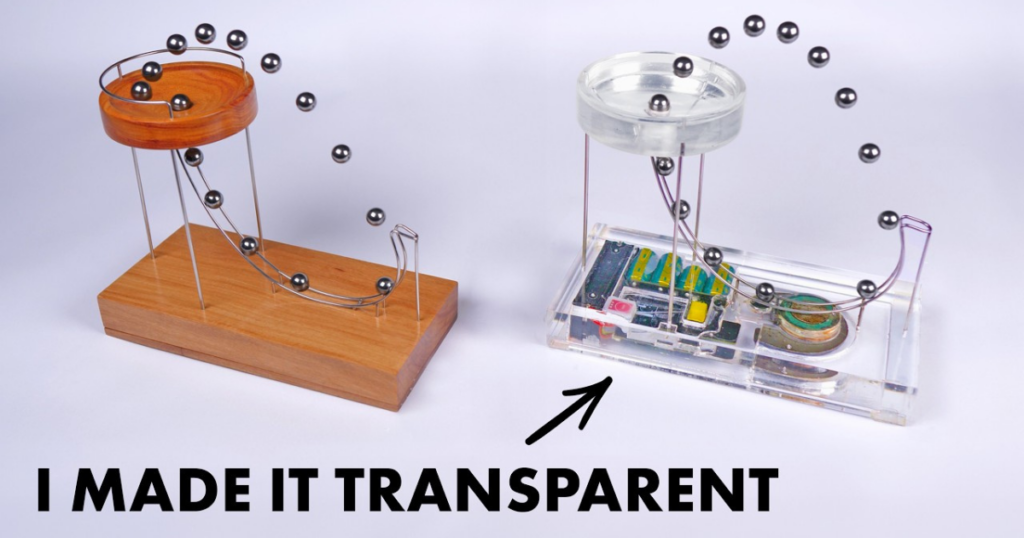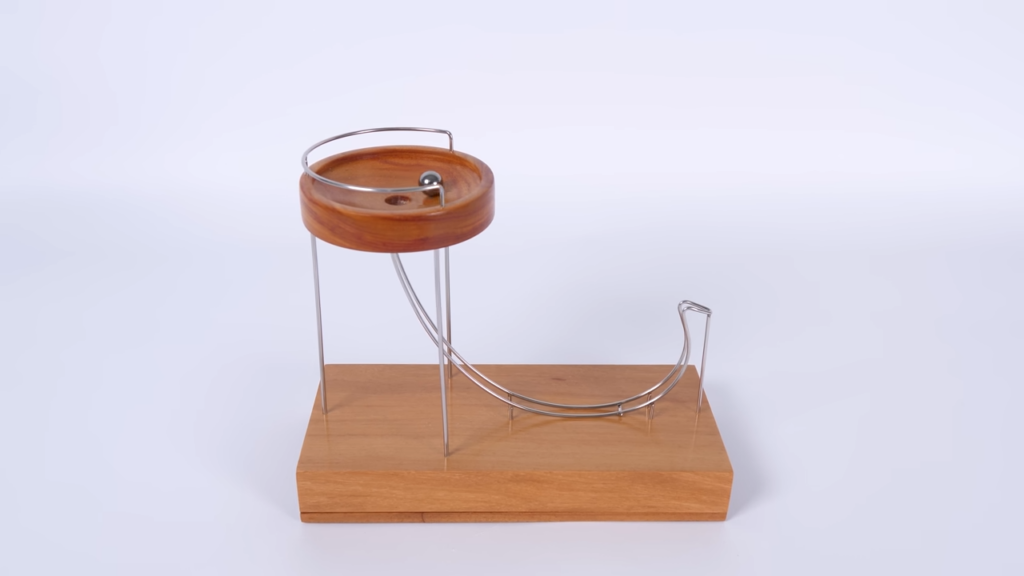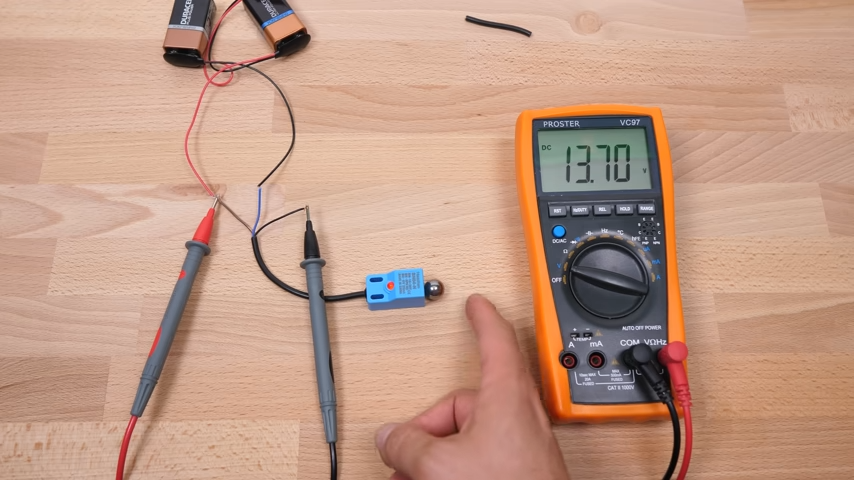
Have you ever seen something that seems to defy the laws of physics? A ball rolling uphill forever? That’s what this video explores, delving into a device called a “perpetual motion machine” that’s not quite what it seems.
But before you get your hopes up for free energy, let’s be clear: true perpetual motion is impossible. This machine, designed by the clever William Le, is more accurately called a “perpetual motion simulator.” It creates the illusion of a ball endlessly rolling thanks to some smart engineering and hidden tricks.
Peeking Inside the Illusion:

Even without seeing the inner workings, we can spot some clues. The ball loses energy due to friction, so something must be adding a boost to keep it going. That’s where the electromagnets come in. But simply turning them on wouldn’t be enough.
The magic lies in a synchronized dance between the electromagnets and a special sensor. As the ball approaches the magnet, the sensor detects it and activates the magnet just in time. But then, the magnet needs to turn off before the ball gets stuck.
The Science Behind the “Push”:
Here’s the cool part: the sensor uses a clever trick. It creates an oscillating magnetic field that induces a current in the ball, generating its own magnetic field. This “induced” field actually pushes against the magnet’s field, propelling the ball forward and up the track.
More Than Just Magnets:
But there’s more to the story! Capacitors store energy to power the electromagnets, and special controls allow fine-tuning the device for optimal performance.
The Reality Check: No Free Energy Here:

Now, hold on to your excitement. This “perpetual motion” machine still needs electricity to function. It’s a fascinating example of how engineering can seemingly bend the rules of physics, but it ultimately relies on good old-fashioned energy input.
The Never-Ending Question: Can We Cheat Physics?
The video also addresses a common question that pops up with magnets: can we tweak things to create true perpetual motion? Unfortunately, the answer is no. Even in the example of a spinning ballerina toy with magnets, the movement requires energy input (usually from your hand!). There’s no such thing as a free lunch, even in the world of magnets.
The Takeaway: A Celebration of Ingenuity:
So, while this “perpetual motion” machine might not live up to its name, it offers a thrilling journey through the world of physics, and engineering, and a touch of illusion. It reminds us that there’s always something new to discover and that even seemingly impossible things can be explained by the wonders of science and clever thinking.




